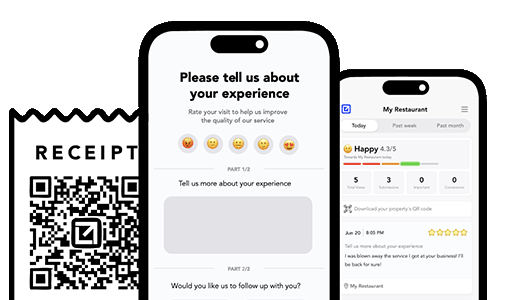From Burnout to Booked Out: Real Tips for Gym Owners Trying to Do It All
Real-world strategies to help gym owners avoid burnout and boost growth.

TLDR: A gym’s reputation can make or break its ability to grow, and much of that reputation is formed long before someone walks in the door. Today’s prospective members check Google, Yelp, and social media before ever considering a tour. This article breaks down exactly how gym owners can take control of their public image, using reviews, photos, and strategic feedback to shape perception and build trust. We explore why many gyms scare off potential clients without realizing it, how negative cues like outdated photos or poor Yelp ratings tank interest, and the powerful effect of review quantity and recency. More importantly, we walk through how to create a feedback loop using QR codes and follow-ups to both improve the member experience and generate more public praise. Whether you’re new or established, this guide shows you how to make your reputation do the selling for you.
When people search for a gym, they don’t start with a phone call, they start with Google. Your online presence, especially reviews and photos, becomes the new front door. If your gym’s Google Business Profile looks outdated, has under 20 reviews, or shows a mediocre star rating, most people won’t even bother scheduling a tour. They’ll move on to the next result without thinking twice.
This is especially true for younger demographics and busy professionals. Before they step inside, they want reassurance: that your facility is clean, that your staff is friendly, and that your members are happy. And they get that reassurance from what they see and read online. If you’re not actively managing that image, you’re silently bleeding potential members every day.
Even if you’ve invested in great equipment and have passionate coaches, subtle cues online can still scare people off. An old photo showing an empty facility can give the impression of low energy or poor community. A single 1-star review, especially if it’s the most recent, can dominate a visitor’s perception, regardless of the 4.7 average rating next to it.
Low review volume is another silent killer. If your gym only has 8 reviews and the last one is from 2022, it doesn’t matter how positive they are. People assume something’s off. Either the gym has no traction, or worse, no one’s impressed enough to speak up. In the era of Yelp, Google Maps, and Apple Search, silence = suspicion.
Your gym’s online reputation isn’t just about numbers. It’s about the story those numbers and comments tell. Does your review section mention cleanliness, friendly staff, and great programming? Or is it a mix of vague praise and a few loud complaints? Are you replying to reviews professionally, showing potential members that you care and listen?
Think of your public profile as a preview of the member experience. Great reviews act like personal referrals at scale. Responding to both positive and negative reviews shows professionalism and accountability. And strategic updates, new photos, updated hours, and fresh Google Posts, signal that your gym is active, engaged, and worth checking out.
Most gyms struggle to get reviews because they ask at the wrong time, or not at all. The best way to build a review engine is through private, in-the-moment feedback. Place QR codes in locker rooms, near exit doors, or in follow-up texts that ask, “How was your workout today?”
This serves two purposes: it catches complaints before they go public and identifies happy members while the experience is fresh. You can then follow up with those happy members, thanking them and gently encouraging them to share their feedback publicly. This process turns private wins into public proof, and it works without sounding pushy.
Most gym owners hyper-focus on Google and Instagram, but forget Yelp entirely. That’s a mistake, especially when you consider that iPhone users (over 100 million in the U.S.) use Apple Maps, which pulls ratings and photos from Yelp. You could have 100 glowing Google reviews and still look weak if your Yelp page has 3 reviews from 2019.
If you don’t ask for feedback in-store, you’re leaving Yelp entirely to chance, and Yelp reviewers tend to be more negative than Google users. By creating private feedback funnels first, you let unsatisfied members vent to you instead of Yelp. And by proactively spotting and celebrating good experiences, you slowly build a Yelp presence that reflects your real quality.
The real value of a strong reputation isn’t just attracting attention, it’s reducing friction. When your gym’s online presence is glowing, clear, and updated, people are more likely to sign up without a long sales pitch. They feel like they already know you, and trust you, before they ever walk through the door.
With the right systems in place, your gym’s public reputation becomes its most powerful sales tool. Not only does it increase conversion rates from walk-ins and website visitors, but it also makes every ad, social post, and referral more effective. In short: it turns your image into momentum.
And in a saturated market, momentum is everything.

Bad reviews can scare away potential customers. Intercept feedback in real time with VisibleFeedback.

Austin Spaeth is the founder of VisibleFeedback, a simple tool that helps brick-and-mortar businesses intercept negative reviews before they go public. With a background in software development and a passion for improving customer experience, Austin built VisibleFeedback to give business owners a frictionless way to collect private feedback and turn unhappy visitors into loyal advocates. When he’s not working on new features or writing about reputation strategy, he’s probably wrangling one of his six kids or sneaking in a beach day.
Whether you have no reviews, bad ones, or great ones, we’ll help you turn your feedback into growth.
No credit card required.
⛨ Trusted by over 137 local businesses like yours